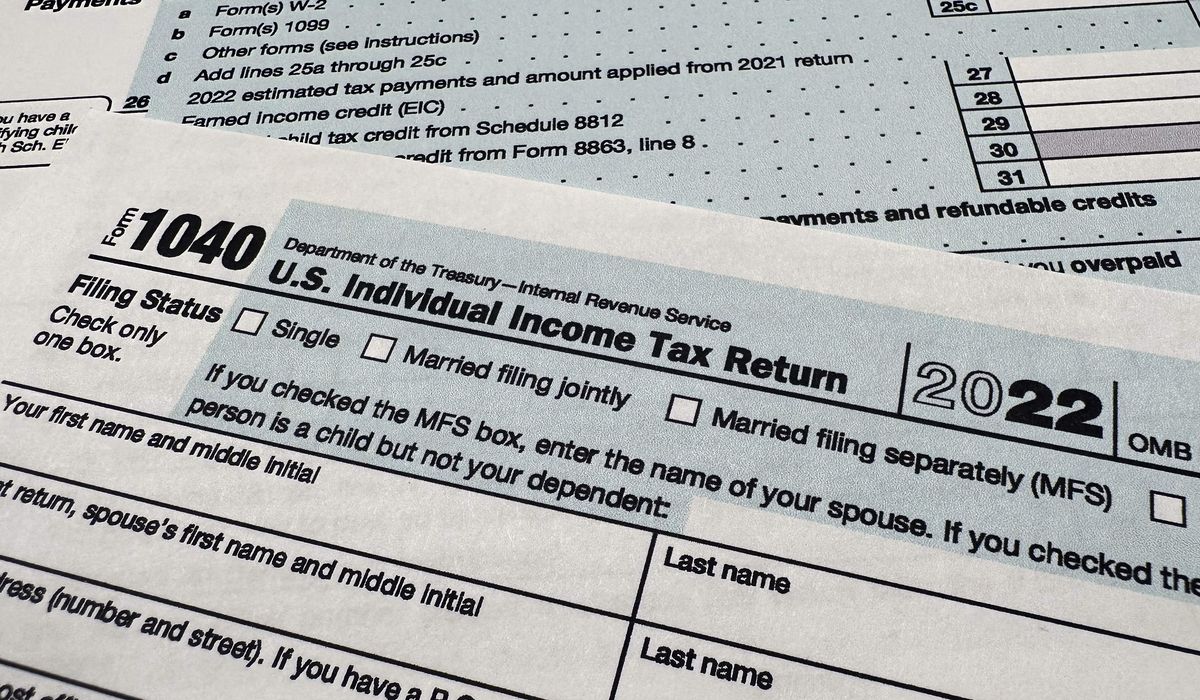


The IRS stumbled on the first year of its Direct File program, falling short of its goal with just a little more than 140,000 people taking advantage of the online pilot program for calculating taxes without resorting to a paid option like TurboTax.
Biden administration officials insisted the pilot was still a success, saying millions of people checked out the new tool and more than 420,000 logged into the system. But in the end, just 140,803 of them filed their federal returns through the new service.
IRS officials said they intentionally “started small” and ramped up during tax season, with more than 5,000 returns a day by the end.
“From the very beginning of the Direct File pilot, we wanted to test new ways to give taxpayers an easy, accurate and free way to file their taxes online directly with the IRS,” said IRS Commissioner Danny Werfel, who called the numbers a “strong response.”
But it’s tough to square that with expectations.
Just a couple of months ago the Treasury Department told Vox, a left-leaning website, that it was expecting “at least several hundred thousand” taxpayers to use the service.
Congressional Republicans have mocked the endeavor, saying the pay services already offer a better product and there was no clamor for the IRS to enter the marketplace.
Plus, they accuse the IRS of cooking the books with its $15 million feasibility study and say Congress never gave the agency the go-ahead to deploy the system.
“This pilot program is simply a way to expand the power of the IRS that no one asked for, especially considering Americans already have numerous options for filing free tax returns,” House Ways and Means Chairman Jason Smith, Missouri Republican, said last month. “From the beginning, the Biden administration tipped the scales in favor of a direct file program that the American people did not want or need. In fact, hardly anyone has used the IRS system in their testing.”
The IRS said it never intended this year to be a big splash.
“The IRS purposefully designed the pilot to follow best practices for launching a new technology platform — start small, make sure it works, then build from there,” the agency said.
Those who did use the program gave it good reviews. The IRS said in a survey of 11,000 users, 90% ranked their experience above average or excellent. They called it trustworthy and liked that it was free.
The pilot was used by only a small subset of taxpayers. It was limited to residents of just a dozen states, and even then taxpayers whose income was complicated by tax credits or who wanted to itemize deductions were generally unable to use it.
The 12 states were Arizona, California, Florida, Massachusetts, Nevada, New Hampshire, New York, South Dakota, Tennessee, Texas, Washington and Wyoming.
Despite the claims of success, the IRS said it doesn’t know what happens to Direct File next.
“No decision has been made about the future of Direct File at this time,” the agency said. “Over the next several weeks, the IRS will meet with a wide variety of partners and stakeholders to learn more about how taxpayers interacted with Direct File and what they expect from a direct e-filing system, then carefully review data from the pilot and feedback from those discussions. Based on that data and feedback, the IRS expects to announce a decision about the future of Direct File later this spring.”
The IRS said it has spent just shy of $25 million on the program, with most of that coming on the $15 million feasibility study for Congress.
• Stephen Dinan can be reached at sdinan@washingtontimes.com.
